#tlatoque
Photo
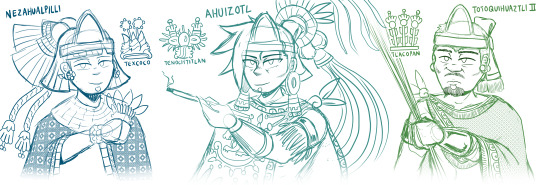
The Triple Alliance Tlatoque
I was sketching the two remaining kings of the Triple Alliance, and decided to throw in Ahuizotl as well to have the three together.
The lords of Texcoco, Tenochtitlan, and Tlacopan, by 1493 CE.
#CodexBlack#CodiceNegro#sketch#tlatoani#tlatoque#TripleAlliance#aztec#mesoamerica#mexico#Character Design#ahuizotl#nezahualpilli#texcoco#tenochtitlan#tlacopan#totoquihuaztli
114 notes
·
View notes
Note
would it be too weird to ask for a 🐗 for enrique 👉👈
Not at all! He's just less developed than some of my other guys so these answers may not be very long or interesting lmao
✨- How did you come up with the OC’s name?
It's just a nice name lmao
🌼 - How old are they? (Or approximate age range)
late 20s, early 30s
🌺- Do they have any love interest(s)?
Originally I was on the fence about whether or not he loves his wife, Charlotte, but have since decided that he does indeed
🍕 - What is their favorite food?
Enrique comes from two worlds, an aristocratic father and indigenous mother. As such he loves a wide variety of food. The most bougie thing he enjoys is jamon iberico croquets, and the least is just rough-milled corn tortillas with chile.
💼 - What do they do for a living?
He is an anthropologist writing a book about his homeland, Tlatoque. In real life he would probably be doing the same for Mexico.
🎹 - Do they have any hobbies?
Technically, I suppose, alchemy. It is not a legitimate career but rather an occult amusement of the wealthy and overeducated. It is real however.
🎯 -What do they do best?
Enrique is a better writer than he is a fighter or sorcerer (though he has to dabble in the latter frequently)
🥊 -What do they love to do? What do they hate to do?
He loves doing his job, he hates getting involved in other peoples' conflicts (though he will often find he must)
❤️ - What is one of your OC’s best memories?
He did not have the happiest childhood, but most likely his favorite memory would be something involving himself, his brother, and Charlotte. In their youth they formed a sort of outcast trio among the nobs of their age group.
✂️ - What is one of your OC’s worst memories?
Probably the time he was executed by firing squad. He got better though.
🧊 - Is their current design the first one?
Yes. I created him, oh, seven years ago? for a short story, nd have not revisited his series much sense, despite having big plans for the setting. So he hasn't changed much.
🍀 - What originally inspired the OC?
His story emerged setting first, on a day when I saw an episode of a bloodborne LP and then found a black votive candle for Lady Death at my local hardware store. Wires crossed in my mind and I thought "mexican bloodborne" and worked outward from there.
🌂 - What genre do they belong in?
latin gothic
💚 - What is your OC’s gender identity and sexuality?
cishet
🙌 - How many sibling does your OC have?
One brother (deceased)
🍎 - What is the OC’s relationship w/their parents like?
Not a fan of his father. Liked hismother but she died when he was young.
🧠 - What do you like most about the OC?
I love the trope of a scholar forced into having adventures
✏️ - How often do you draw/write about the OC?
Not often!
💎 - Do you ever see yourself killing off the OC?
Maybe at the end of the series, I haven't planned that far ahead.
💀 - Does your OC have any phobias?
lightning
🍩 -Who is your OC’s arch-nemesis or rival?
He doesn't have one per se. The plan is to have all his stories be serialized and mostly self contained, though there is an Entity masquerading as his brother that he's trying to find, and of course, The Actual Devil frequently show up to taunt him.
🎓 🍥 - these shouldn't be different questions
I think I said 7-8 years ago earlier lol
5 notes
·
View notes
Text

"Me perdonas-- ¿Este asiento está vacío?" Señaló el taburete a un costado. Gain se había acercado cuando la divisó en la barra, usando un tono dulce que apenas se alzaba por encima de la música de ambiente. "Porque me encantaría ofrecerme como tu compañía de la noche."
Las filmaciones habían terminado un poco más tarde de lo esperado y sólo había tenido tiempo para enviarle un mensaje de texto a Dahui. Todo lo que esperaba es que lo hubiera leído, de lo contrario se vería bastante mal ese retraso de 30 minutos por encima de la hora que habían estipulado para encontrarse. @tlatoque
3 notes
·
View notes
Text
¿Sabías que "Chocolate" NO era la palabra que usaban los mexicas para referirse a la bebida de cacao?
La palabra náhuatl xocóatl (pronunciada shocóatl) «agua ácida o amarga», de xococ «cosa agra» y atl «agua» no tiene nada que ver con la bebida de cacao que bebían los tlatoque y miembros de la nobleza (pipiltin).
El xocóatl NO contenía cacao. Era una bebida hecha de agua y maíz sin endulzantes y sólo la consumían los macehualtin.
La bebida de cacoa que consumían los pipiltin, y que Motecuzoma le dio a Hernán Cortés se llamaba cacahóatl «agua de cacao». ¿Ahora entienden el origen de la palabra "cacao"?
Domesticado en Mesoamérica desde hace mas de tres mil años posiblemente por los olmecas, el cacao es el fruto que da origen a uno de los productos más deliciosos que existen, el chocolate.
Los mayas lo consumieron como alimento, con carácter terapéutico y como moneda, comerciándolo por la costa hasta Honduras. Las crónicas de los conquistadores son elocuentes cuando se refieren a la importancias dada por Moctezuma Xocoyotzin al chocolate como bebida estimulante. Los pueblos indígenas supieron perfumarlo con vainilla, flor de magnolia, flor de acuyo o con hueynacachtle.
Recientemente se ha comprobado los beneficios de éste, que desde tiempos prehispánicos se sabían, que es un estimulante natural que produce una sensación de bienestar, consumiéndolo sin exceso.
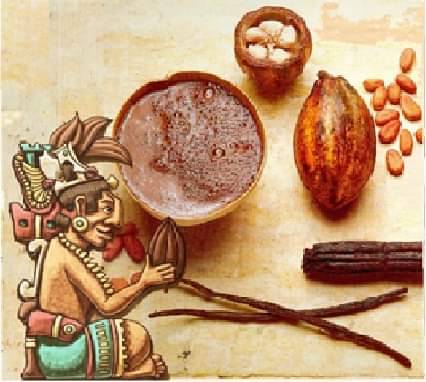
1 note
·
View note
Link
48 notes
·
View notes
Text
Extractos del artículo “Los caciques: Ayer, hoy ¿y mañana?” De Lorenzo Meyer en Letras libres
México ha sido tierra de caciques desde antes de que el término mismo fuera introducido por los conquistadores españoles en el siglo XVI. En realidad los primeros caciques aceptados como tales fueron los nobles que encabezaban los señoríos indígenas que los españoles encontraron en América los jefes hereditarios de las estructuras sociales locales ya existentes y cuya autoridad les fue reconocida por los conquistadores una vez que se sometieron a los representantes del monarca español. La autoridad colonial asignó a esos caciques un lugar en la estructura formal de poder a cambio de desempeñar el papel de intermediarios entre la masa indígena sojuzgada y el gobierno virreinal.
La palabra cacique es una corrupción de kassequa, vocablo arahuaco con que se denominaba a los jefes indígenas que encontró Colón en La Española en 1492.
José Varela, desde la perspectiva de un historiador político de la España del siglo XIX, propone una definición breve pero sustantiva: "tiranos chicos".
Paul Friedrich, propuso una definición más puntual: "[...] un líder fuerte y autocrático en relación a los procesos políticos locales y regionales, cuya dominación es personal, informal y generalmente arbitraria, y que es ejercida mediante un núcleo central de familiares, pistoleros y dependientes y que se caracteriza por la amenaza y el ejercicio efectivo de la violencia".
poder arbitrario pero limitado.
Una vez que se llevó a cabo la Conquista, el aristócrata indígena, el tlatoque, fue rebautizado como cacique, y los miembros de las órdenes militares o pipiltin como principales. Las autoridades españolas les reconocieron su estatus superior y hereditario y les incluyeron en la estructura de autoridad como gobernadores, jueces, alcaldes o regidores a cambio de que les sirvieran para recabar el tributo, proveer de fuerza de trabajo a los propietarios españoles y, en general, para controlar a la población nativa a los maceguales, justo como lo habían hecho desde antes de la Conquista.
Al estallar la independencia, el cacique indígena era casi tan pobre como el promedio de la masa rural. Sin embargo, la institución no murió, y con las condiciones que surgieron al inicio de la etapa independiente tuvo un renacimiento y un cambio.
En efecto, desde la óptica liberal, la relación entre el ciudadano recuérdese que en el México independiente se abolieron las castas y sólo había "ciudadanos" y la autoridad debía ser directa. Sin embargo, México con-tinuaba siendo un país de masas indígenas reales y de "ciudadanos imaginarios", de ahí la facilidad con que resurgieron los intermediarios informales pero efectivos: los caciques.
Personajes que bajo la estructura oligárquica se distinguían poco del resto del suelo social caballerangos, bandidos, maestros, mineros, rancheros, pequeños comerciantes, estudiantes, dependientes e incluso algunos grandes propietarios marginales, etcétera surgieron como los nuevos hombres del poder, pero con métodos viejos: los caciques revolucionarios.
Cuando el fuego y el humo de la revolución se apagaron y disiparon y se inició el proceso de institucionalización, una segunda generación de caciques se montó sobre la primera y jugó un papel importante en la formación del Partido Nacional Revolucionario y en su consolidación como Partido de la Revolución Mexicana y, finalmente como Partido Revolucionario Institucional
0 notes
Photo

TLATOQUE ORQUESTA Viernes 18 de junio en Foro Cultural Hilvana. Chava Rockagenda. Recomendaciones de conciertos. @forohilvana #Agenda #Conciertos #Viernes #RockMexicano #Rock #Musica #ChavaRock #recomendaciones https://www.instagram.com/p/CQRd5uSrifV/?utm_medium=tumblr
0 notes
Text
TONALLAN TLATOHCAYOTL. “Cihualpilli y el concepto de Señorío”.
“.. dos circunstancias interfirieron en la ecuación absoluta de las comunidades tlatoani con las cabeceras coloniales. Una se relacionaba estrechamente con la nueva terminología española, ya que los españoles hablaban también de los regímenes tlatoani como señoríos y de los tlatoque como señores, señores principales, señores naturales o caciques.
Estos términos eran consecuentes con otros usos españoles, pero su aplicación aquí significaba que los españoles pasaban por alto en todas partes el término náhuatl adecuado: tlatoani. Señor, por supuesto, era una palabra española. Cacique era una palabra arawaka, que los españoles habían adoptado en las Antillas y llevado, natural y fácilmente, a México.
El no emplear el título local náhuatl en México tenia importantes implicaciones, ya que significaba que los indígenas podían reclamar ser caciques y que las comunidades podían reclamar ser cabeceras, sin llenar los requisitos originales. La terminología colonial daba pues una oportunidad para excepciones a la regla, especialmente puesto que, con el paso del tiempo, las normas originales ya no eran pertinentes.
Podemos recordar la reorganización efectuada por Cihualpilli Tzapozintli en la zona coca donde, tras la eliminación del dominio de los tecuexe, algunos tlatoque fueron restablecidos en sus posiciones mientras otros fueron suprimidos, pasando sus zonas al control de Cihualpilli. Estas comunidades revelaron un quebrantamiento o ruptura en la historia tlatoani, resultando en la separación de las comunidades que se representaban dando como resultado, una debilidad evidente al momento de ser sometidos por los españoles”.
Los aztecas bajo el dominio español (1519-1810). Charles Gibson. 1967
En la imagen. Representación de la “Señora de Tonalá” (2017). Tonalá Jalisco.
#soydetonala🌞
#tierradenahuales👺
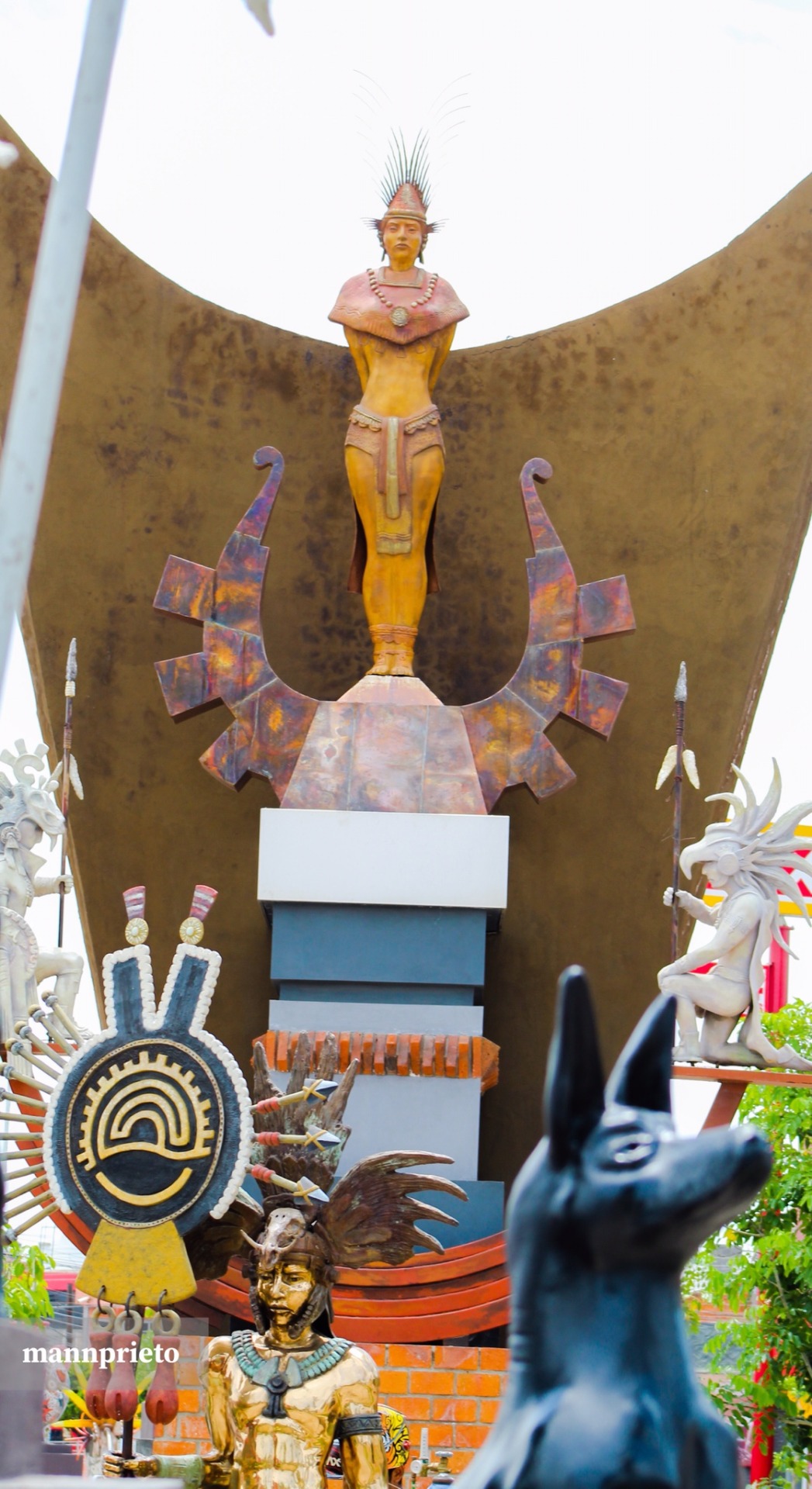
1 note
·
View note
Text
Let sleeping dogs lie
IN TEPILHUAN IXPAN
OF THE KING
TO THE SUPERSTITION
IN MACHIZ OMMATI CAMPA CUEPONI
BY THE JOY
IN TLATOQUE
IN MANTECH ONITTOCAN
IN THE HEAVENS
FROM THE LAND
TO THE HEAVENS
IN LIFE
IN YECTLI AHUIAC XOCHITL IC NIQUIMELLELQUIXTIZ
BY THE LORDS
THAN I
IN COYOLTOTOTL AYACACHIçAHUACATIMANI
IN TINOCNIUH XOCHIHUEHUETL
OF RECKONING
IN CENTZONTLATOLLI; AZO QUINNANANQUILIA
IN THE LAND
IN TLAZOTEOXIUHME
IN ILHUICAC IC PAPAQUI
TO US
WITH THE DEW SCATTERED
OF HIS BOOKS
FROM THY HAND THY MOON
IN MOTLOC TIPALNEMOHUA OHUAYA OHUAYA
IN TEUCYOTL
OF THIS WORLD THERE
IN THE FLOWERS
IN CHALCHIUHUEHUETL ONCAN CHIALON IPALNEMOHUANI
OF THESE LIONS
INTO THE GROUND
WITH WREATHS
IN XOCHITL TONEQUIMILOL ZANIO
IN NOTLALNAMIQUILIZO QUIN PEPETLATIQUIZA
IN TOYOLLO
OF THE POEMS
IN NITLAOCOLCUICA
IN LUSTER
AS FOLLOWS
IN MEMORY
OF PLEASAUNCE
WITH THEM
BY THE FIRES
IN SPIRIT I
IN TLAZOCHALCHIHIUITL
OF THEIR THRONES
WITH GOODS
IN TAMOCNIHUAN ETC
IN NOYOLIA NICINECUIA YECTLIYA XOCHITLA NETLAMACHTILOYAN XOCHI YE IHUINTI NOYOLIA
ON MY DRUM
ON EARTH GRIEF
IN THE PLACE
IN NICAN ACXOYATZINITZCANQUAUHTLA MANOZE NITLAHUIHUILTEQUI
ON MACHIAZ
OF THE KING NEZAHUALCOYOTL
IN ATLE TLAHUELLI
IN ATLE
IN TLAZOMAQUIZTIN
IN TONICNIUH TLATZIHUIZ YEHUAN DIOS
OF TETLEPAN QUETZANITZIN
IN THEIR GRANDEUR
IN TOCNIHUAN NICAN MOCHIPA
WITHIN THE HEAVENS
IN YUHO
0 notes
Text

¿Sabías que La piedra del sol NO es un calendario?
(Primera parte)
El verdadero calendario azteca funciona de la siguiente manera:
La cuenta de los días
En la cultura nahua los días se cuentan por veintenas, llamadas cempoallapohualli «la cuenta de las veintenas». Cada uno de estos 20 días tiene un nombre, asociado a una deidad.
Nombre del día
1. Cipactli, «caimán o lagarto».
2. Ehécatl, «viento o aire».
3. Cali, «casa u hogar».
4. Cuetzpalin, «lagartija».
5. Cóatl, «serpiente».
6. Miquiztli, «muerte o calavera».
7. Mázatl, «venado».
8. Tochtli, «conejo».
9. Atl, «agua».
10. Itzcuintli, «perro».
11. Ozomatli, «mono».
12. Malinali, «hierba muerta».
13. Ácatl, «caña o flecha».
14. Océlotl, «ocelote o jaguar».
15. Cuauhtli, «águila».
16. Cozcacuauhtli, «buitre».
17. Olin, «movimiento».
18. Técpatl, «cuchillo de pedernal».
19. Quiáhuitl, «lluvia».
20. Xóchitl, «flor».
Un año tiene 18 veintenas, las cuales tienen un nombre específico, algo parecido al calendario gregoriano de enero a diciembre.
1. Cuáhuitl Ehua
2. Tlacaxipehualiztli
3. Tozoztontli
4. Huey Tozoztli
5. Tóxcatl 14. Quecholli
6. Etzalcualiztli
7. Tecuilhuitontli
8. Huey Tecuílhuitl
9. Tlaxochimaco
10. Xócotl Huetzi
11. Ochpaniztli
12. Teotleco
13. Tepeílhuitl
15. Panquetzaliztli
16. Atemoztli
17. Títitl
18. Izcalli
18 meses de 20 días suman 360 días, más los 5 días llamados nemontemi «días aciagos» o «días en vano», porque no pertenecen a una divinidad y no cuentan en el ámbito religioso; sin embargo, sí se integran en la sucesión calendárica de los días para completar los 365 días del año.
Los años se cuentan de cuatro en cuatro, en el siguiente orden:
Ácatl «caña», Técpatl «Pedernal», Calli «Casa» y Tochtli «Conejo».
Cada uno de los 20 días se combina con 13 números.
El año Ácatl «caña» inicia con el mes 1 Cuáhuitl Ehua y el día «Uno Caimán», le siguen «Dos Viento», «Tres Casa», hasta llegar al «Trece Flecha».
El próximo signo «Jaguar» ya no lleva el número 14, sino que reinicia la numeración. Es decir que la segunda trecena empieza con el día «Uno Jaguar» y termina con «Trece Muerte», ubicándose en el segundo mes del año, el cual corresponde a Tlacaxipehualiztli, y así hasta que se llegue nuevamente al «Uno Caimán», con el cual reinicia la cuenta de los días, pero continúa la cuenta de los meses hasta que se llegue al mes 18 que corresponde a Izcalli.
Se cuentan los cinco días aciagos e inicia el año Técpatl «Pedernal», en el mes Cuáhuitl Ehua, día Dos Muerte. Y así sucesivamente.
El calendario completo estará en mi libro "Tlatoque III, Somos mexicas", disponible en librerías en el segundo semestre del 2021.
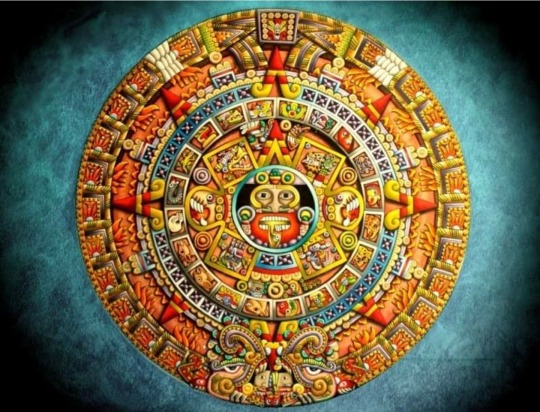
0 notes
Photo
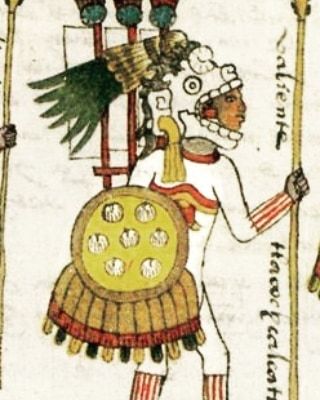
Tlacaélel (1398h.-1475h.) (en náhuatl: tlacaelel, ‘el que anima el espíritu - el desposeído’‘tlacatl, persona; elel, de gran corazón y de fuertes y rigurosas entrañas’) fue un guerrero, economista, estadista y reformador religioso mexica. Se desempeñó en el cargo de consejero de gobierno o sumo sacerdote Cihuacóatl (mujer serpiente), un asesor o consejero de varios Huey Tlatohqueh (grandes oradores) mexicas y terminó asumiendo el poder tras el trono del señorío mexicadurante cuarenta y cinco años (1430-1475), según la historiografia actual. Consejero de tres tlatoque: Itzcóatl, Moctezuma Ilhuicamina y Axayácatl. Sobrino de Itzcóatl y hermano de Chimalpopoca y de Moctezuma Ilhuicamina. Fue el autor intelectual de la reforma religiosa, ideológica e histórica más importante en la historia de los mexicas. https://www.instagram.com/p/CEaFUO-pRHX/?igshid=9g2eqge6h3r0
0 notes
Note
tlatoque and water maiden for that orange ask game brother. the very first question
ORANGE - Describe the world!
Tlatoque is a setting inspired by Mexico. The technology and culture is roughly around the 1870s in our world. The setting is named after the country where the majority of the action takes place, a sprawling land shaped somewhat like a crescent with tropical regions in the south and colder fjordlands in the north, giving way to a massive island chain claimed by multiple countries. Tlatoque is divided up into states under a federal republic, as well as partially independent nations that are in political unions with the federation. This is a very new arrangement; Tlatoque was recently an empire, itself a puppet state of a much larger overseas empire. There has recently been a revolution; while there is peace for now, the new government has yet to institute its promise of free elections.
Tlatoque is a low magic fantasy setting. Certain fantastical animals and landscape features exist but people generally don't interact with magic in their every day life. It is referred to as witchcraft and most anyone could learn to do it, but it requires making a pact with a tutelary demon or spirit and costs blood to cast. The people of the setting are predominantly human, though mythical creatures such as satyrs, cyclopes, and duendes exist, usually working with or being exploited by witches for their magical blood.
The land around the capital, Tlatoquepec, was bleached white by some unknown incident in the ancient past, and everything brought into the region slowly loses color (except people). There is a city-state inside Tlatoque ruled by an avatar of the native goddess of death. The religion of this setting is analogous to Catholicism, except that its primary deity is a woman who was martyred by being broken on the wheel.
Water Maiden is one of my stories, whose setting is named The Shattered Kingdoms. There was once a large land empire; thirty years ago the land was devastated by a series of meteor impacts that altered the climate, turning the land into a desert, seen as a punishment from the gods. The land is choked with gem dust in various colors, separating it into different color coded deserts and wastelands.
The magic system is called chromamancy and centers around colors, light, and gemstones. Gems are essentially crystallized light, which can be called on to create other substances that are symbolically of their color. Some people also have the ability to do this naturally using their own inner chroma and are essentially living gemstones in this context. These people have only begun appearing in the years since the cataclysm so they are considered new and disruptive. Monsters have also begun to appear, normal animals mutated by the sudden abundance of chroma.
The culture is inspired by various phases of ancient japan as well as bronze age china. This world does not have a codified writing system, but there is a method of color-coding phonemes that people use for fortune telling and a form of paint-poetry. There is some ironwork but it is usually made by magic, as people have yet to figure out how to smith it.
5 notes
·
View notes
Text
The Early Life Of Cuauhtémoc
Cuauhtémoc is believed to have been born around 1495, though the exact year is of his birth is unknown. He was born to Aztec emperor Ahuitzotl and his wife Tlilancapatli. He was the eldest legitimate son of the Emperor. Young Cuauhtemoc attended Calmecac, a school for the upper-class boys, to complete his formal education. Very little is known about Cuauhtémoc prior to his ascension to the Aztec throne. It is known that Cuauhtémoc’s family had produced many tlatoque (the plural form of tlatoani). His grandfather and two uncles are recorded to have held this position of power. Furthermore, the two Aztec rulers preceding Cuauhtémoc (Moctezuma II, and his immediate successor, Cuitláhuac) were his cousins. Prior to the arrival of the Spanish, the young Cuauhtémoc had risen through the ranks of the Aztec elite, acquiring the post of tlacatécatl (general), and was part of a committee of nobles who were ruling the district of Tlatelolco.
0 notes
Note
i emerge, covered in blood. finally. CARROT
CARROT-what's the agriculture like?
Tch...of course you do this after all the times I mentioned thinking about food in fantasy settings...
Tlatoque: being based as it is on post-independence mexico, this is a largely agricultural society, as were the native societies displaced by their ancestors. There's not really a lot of fantasy crops here but the government is starting to push for the mass planting of cash crops to gain more income, which is going to be bad for everybody just like in real life. The indigenous tlatoqueños practiced the three sisters method (corn, beans, and squash in the same field). Those around the capital farmed fish and used milpas (artificial islands made up dredged up lake mud. Not floating gardens as they have been erroneously described)
The Shattered Kingdoms: I should probably do more research into bronze age agriculture specifically. I will say that the characters eat a lot of "rice" but it's not real rice. It's a blueish grain that cooks like rice but doesn't use a lot of water. This is good because rice does indeed use a lot of water, and this country has been desertified. True rice does exist but it's practically extinct now
3 notes
·
View notes
Note
can i get that HONEY for tlatoque and shattered kingdoms
HONEY - What is the best dessert?
Both worlds have a churro-like dessert made from frying long pieces of dough, though the Tlatoquese one is extruded from a pipe and topped in cinnamon sugar, while the shattered kingdoms one is stretched and twisted by hand and drizzled with a melted sugar sauce. Tlatoque has recently invented a tres leches cake, though since processed milk products aren't as common, they use a mixture of milk and cream, with the third leche being dulce de leche.
3 notes
·
View notes
Note
CLEMENTINE. TLATOQUE AND THE SHATTERED KINGDOMS
CLEMENTINE - What is the most common pet?
What a question. I was just gonna say like "sorry it's dogs. both of these settings are very earthlike" but I realize dogs are very malleable beasts so I can dig a little into breeds and culture around them
Tlatoque: of the two settings this is the most earthlike so it has the most regular dogs. That being said, with the setting being based on the americas, did you know that native american dogs were likely domesticated from coyotes instead of gray wolves? centuries of interbreeding with european dogs has largely wiped out their indigenous genes. In Tlatoque, this is not the case. Indigenous dog breeds are very common and after the revolution the kind of dog you owned was seen as a sort of an indicator of class solidarity. Political cartoons depict molassers particularly as being indicative of the old world aristocracy while the xolo equivalent is thought of as the People's Dog.
The Shattered Kingdoms: in this world, people can have anime hair colors. So why not animals? The shiny technicolor pelt of your dog is an indicator of what region it hails from. It's only been a generation or so since the cataclysm but dogs reproduce fast so the art of breeding colorful rainbow dogs is a new but established one. There are big chunk dogs with manes round their necks used by shepherds, and smaller, sleeker house dogs. After the cataclysm, a lot of people fucking died, but a lot of the time animals are heartier than humans, so there are many dogs roaming the wastelands. The two breeds have intermingled with each other, as well as the wild wolves (these are compact Honshu type wolves, not huge grey wolves) and jackals that moved in after the fact, creating a nasty fighting breed called the pariah dog. These mutts often have manes or patches of different colors, but don't have a set appearance due to their mixed up ancestry. Some people do fancy them and have tried to redomesticate them.
As an aside, the law of colorful pelts applies to all animals, not just dogs. I can imagine there is a strong culture of bird breeding as well, and that this will lead into the development of messenger pigeons and such.
2 notes
·
View notes